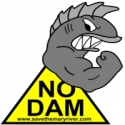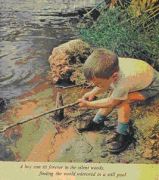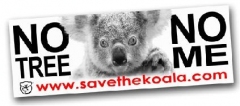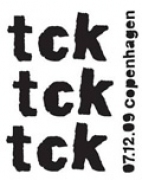
Logan and Albert Conservation Association

A restaurant where sustainability is not measured in terms of financial profits.
A restaurant where environmental and ecological factors are equally important. An owner who walks the walk and envisions further methods of reducing the ecological footprint of the cafe.
Sydney restaurant Billy Kwong owner, Kylie Kwong,has been recognised with winning the inaugural Sustainability Award, a salute to restaurants that do their bit for the environment, as well as diners.
Five years ago, Kwong decided to lessen her restaurant's impact on the planet. She began by converting her conventional Chinese pantry to organics and biodynamics, painstakingly replacing ready-made oyster and hoisin sauces with additive- and preservative-free alternatives. "It's been great," she says. "And we've had to become really creative. Every week we'd look around and work out how to improve things. It was a complete revelation."
This is a woman who wears her convictions as a badge of pride - and lists her causes on her website, from Stephanie Alexander's Kitchen Garden Foundation to Fair Trade, Oxfam and the BFA (Biological Farmers of Australia, an organics certifying body).
Diners at Billy Kwong can donate to the restaurant's renewable energy credits program, purchased from a wind farm in the Chinese province of Hebei. And there's no bottled water; it's Sydney tap water run through a filter.
"Every time I think of a new provedore or using an ingredient, I ask whether it's sustainable," Kwong says. "I think about its carbon footprint, whether it's ethically produced and about serving food that has been harvested with love and integrity. Knowing the growers means you treat produce with respect. It's also a way of re-humanising the food chain."
Each of the top ten restaurants demonstrate how environmental sustainability can contribute to a profitable business and give back to the community.
Luke Nguyen's Vietnamese restaurant composts and recycles and uses a waterless wok burner. It uses line-caught fish; free-range pork and beef; and organic fruit, vegetables, coffee and poultry.
Courtney's Brasserie at Parramatta uses a blackboard map that traces a 200-kilometre radius around chef Paul Kuipers, in which he searches for local produce with an emphasis on seasonality and organics.
Eurolounge at Castle Hill is an example of thinking globally and acting locally, with the kitchen scraps and coffee grinds going to local gardeners, shredded paper recycled by a pet store and a menu seeking local produce and organic wines.
Becasse Chef Justin North buys straight from the farm gate, forming strong bonds with farmers who share his approach to sustainability. In return, he showcases their work in regular producer lunches.
From Sean's Panaroma we learn that every week for more than a decade, Sean Moran has taken scraps to his Blue Mountains hideaway to nurture the land, returning with the rewards, from fruit and herbs to eggs, chicken and even beef. Order herbal tea and they'll pick it fresh.
 Courier Mail reported 12 September 2009
Courier Mail reported 12 September 2009
Queensland Co-Ordinator General Colin Jensen has signed off on the Traveston Dam project - with a host of new environmental conditions, including more protection for endangered fish, frogs and turtles in the Mary River.
Work will start at the site near Gympie by early next year if federal Environment Minister Peter Garrett gives his approval. Bruce Highway upgrades will also begin with the work.
But anti-dam campaigners will be angered by the latest developments and are likely to step up their legal action. They have vowed to fight the case to the High Court if it is necessary.
 Queensland has the highest greenhouse emissions per person in Australia. We are also one of the most vulnerable regions in the world to the impacts of climate change. We have an absolute vested interest in reducing those impacts.
Queensland has the highest greenhouse emissions per person in Australia. We are also one of the most vulnerable regions in the world to the impacts of climate change. We have an absolute vested interest in reducing those impacts.
This will only happen if the Queensland Government takes the lead to give us a safe climate for the future.
The notion that coal-fired power stations of any type are part of our energy future is nonsense. All coal-fired energy generates huge greenhouse gas emissions.
Storing that CO2 underground, if appropriate geological formations can even be found, is not a solution it is an expensive, temporary band-aid.
Despite years of promotion and funding by the Queensland Government ‘clean coal' technologies are still decades away from viability.
What is needed is immediate action to reduce our current greenhouse gas emissions; not those we might be emitting a decade or two from now.
Logan and Albert Conservation Association LACA is a member group of Queensland Conservation which has identified five critical steps to effective greenhouse gas reductions.
These initiatives, coupled with a revised carbon policy by the Commonwealth could halve emissions by 2020.
 Outdoor schooling has many benefits
Outdoor schooling has many benefitsBy David Suzuki with Faisal Moola
As our children and grandchildren head back to school it is important to consider not just what we are teaching them but how we are teaching them. After all, the world is facing some incredible challenges, and today's young people will be left to deal with many of them.
So, do we fill their heads with facts and figures so that we can evaluate their progress through standardized testing? Or do we give them tools so they can think for themselves?
Back in 1956, when I was in college, Rachel Carson, a biologist, writer, and ecologist who had a tremendous influence on me, wrote an essay for Woman's Home Companion magazine, titled 'Help Your Child to Wonder', which she later expanded into her book The Sense of Wonder. In the article, she wrote, 'It is more important to pave the way for the child to want to know than to put him on a diet of facts he is not ready to assimilate.'
![]() Everyday we hear and read about the environment and how our human behavioursare impacting on our home. The environment is everyone's home and is shared - though not evenly - with all humans and all other life forms or species.
Everyday we hear and read about the environment and how our human behavioursare impacting on our home. The environment is everyone's home and is shared - though not evenly - with all humans and all other life forms or species.
This week 11- 17 October 2009 is the first ENVIROWEEK. It has been set up to highlight and reward or acknowledge those people, groups, schools and community groups who are each making contributions towards protecting our environment.
Coolaustralia.org is the group responsible for beginning this promotion and various cities and individuals have connected with the process.
Can you imagine our country without koalas? Well incredibly for the first time in our history, the future is dire for one of our national icons - film from Today Tonight can be accessed from this page. Scroll down to view the story. Business as usual urban development where trees are cleared causes stress and stress induced disease chlamydia follows with dire consequences.
Too late to protect koalas: lobbyist
 Headlines from DARREN CARTWRIGHT's coverage in The Age newspaper reports on the current koala situation in SOUTH EAST QEENSLAND for September 1, 2009
Headlines from DARREN CARTWRIGHT's coverage in The Age newspaper reports on the current koala situation in SOUTH EAST QEENSLAND for September 1, 2009
The Queensland government's new measures to prevent koalas dying out southeast of Brisbane are too little, too late, says Australian Koala Foundation boss Deb Tabart.
Ms Tabart said it has been predicted that by next year no koalas will inhabit the Koala Coast region, which is 375 square kilometres of land starting 20km southeast of Brisbane.
The state government has already acknowledged the dire situation of koalas in the region in a 2008 report, Decline of the Koala Coast Koala Population.
Ms Tabart on Tuesday said Premier Anna Bligh wrote to her this week outlining a new conservation policy for 2009 to prevent any further decline in koala numbers, which have plummeted from more than 6,000 between 1996-99 to just over 2,000 in 2008.
"It won't do anything. It's just delusion on their part," Ms Tabart told AAP, referring to the new policy.
"The only thing that will stop koalas dying is to stop cutting trees. It's as simple as that.
 September is Save the Koala Month!
September is Save the Koala Month!
Can we take action to SAVE THE KOALA IN SOUTH EAST QUEENSLAND?
WHAT WILL YOU DO TO HELP PROTECT ESSENTIAL KOALA HABITAT?
Talk to your politicians at all levels and tell them you value the koala more than built infrastructure designed only for an ever growing and demanding human population
KOALAS OR COAL IN SEQ?
KOALAS OR HUMAN SETTLEMENT?
Have you heard about the Southern Freight Rail Corridor - cutting through pristine bushland with a population of healthy koalas? This area was NOT MAPPED for the koala SPP - state planning policy.
Is coal for future energy at the cost of koalas what we want?
AKF RALLY 11 AM FRIDAY 25 SEPTEMBER 2009 IN BRISBANE
Brisbane Square, Brisbane City
Save the Koala Day
Bring along as many people as possible to help us secure the future of the Koala
Watch this video - a collection of Koalas - Koalas in the Wild - Koalas in Zoos Will Zoos be the only place we can see them soon?
and Koala images from different locations across Australia from various sources.
The "Save Our Koalas Rally" will be held in Brisbane on 25th September, please email: wildlife2save-at-live.com.au for more information or please give up just one day to come and show your support for the most iconic of Australians. The Koala. Thankyou to everyone who captured these brilliant images of Koalas. Together, united, we can make a difference!
Oxfam Australia requests support for Sisters on the Planet in their efforts to tackle climate change
Host your own DVD screening to raise awareness of the human impacts of climate change
Register before 15 September to receive the SOTP events pack. If you've ever asked yourself "What can I do to prevent dangerous climate change?", this is your answer.
Register here and also check out some great resources and films.
We're all feeling the effects of climate change. But women in developing countries feel the impacts the most.